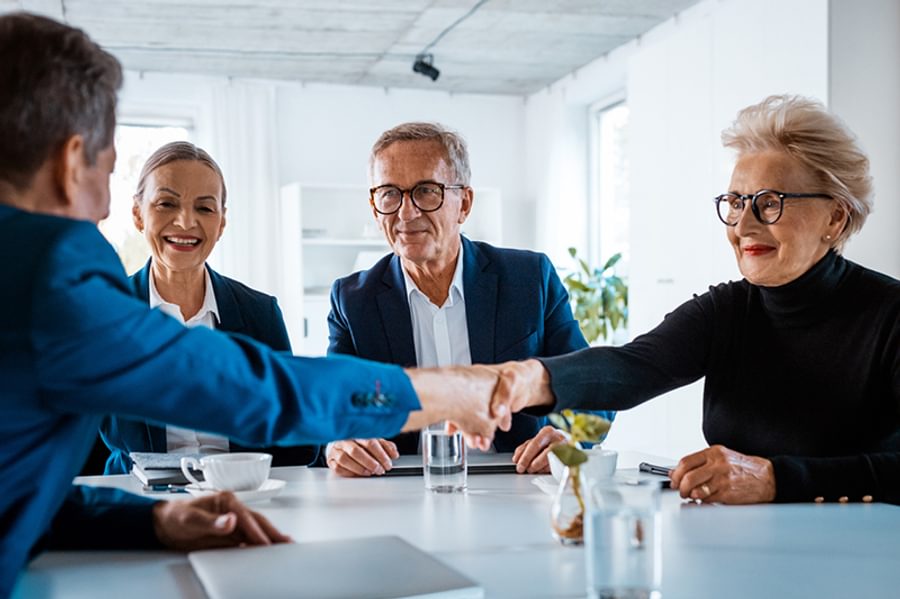Note: This information is from 2022 but much has changed since then. Please be sure to discuss your unique financial situation with your McKinley Carter Advisor or another trusted professional.

Many people find enjoyment in service on boards of directors for their favorite non-profit organizations. The most effective boards seem to have a thoughtful and strategic approach to selecting their directors with the intentions of achieving and maintaining an appropriate balance of skills, experiences, and interests that serve the organization’s interests very well. This issue is particularly important among selection of officers for the board. Learn more.
The world is full of possibilities to make a difference for others. As you have taken an interest in a blog post like this, it’s likely you have accepted the challenge. We hope these thoughts about board composition will lead to higher returns on your investment of resources and maximize your impact.
Many people find enjoyment in service on boards of directors for their favorite non-profit organizations. Like me, it could be a foundation for your alma mater or park system, a local scouting organization, or so many other possibilities. Like you, I find personal fulfillment helping ensure organizations like these are vibrant, impactful, and positioned to be sustainable — hopefully in perpetuity. But occasionally, I’ve also found service on some boards frustrating as there seem to be varying levels of organizational dysfunction.
The cause of this dysfunction wasn’t always obvious to me in the earlier years of my board service but, over time, it became much clearer. The most effective boards seem to have a thoughtful and strategic approach to selecting directors with the intentions of achieving and maintaining an appropriate balance of skills, experiences, and interests that serve the organization’s interests very well. This issue is particularly important among selection of officers for the board.
One approach to differentiating and finding an appropriate diversification of your directors is to identify those with technical skills, those that are mission focused, and those that are accomplished visionaries.
Technical, Mission, and Vision focuses
With decades of investment management experience, I’m often asked to serve on boards to oversee the finance function which I’m happy to do. Considering my background and resources available to me, it’s a relatively easy role to fill and, like others that are regularly invited to boards for their technical skills (accountants, attorneys, construction backgrounds, etc.) I’m happy to offer my skills to help the organization. However, technical directors should not be more than a third of a typical board.
Mission focused directors seem to be the most common on many boards. While these members care deeply about the constituency the organization serves (i.e. students at the college, the boys or girls in scouting, or patients at the local hospital) and can be creative in thinking through ways of improving services to them, they don’t always bring the depth of thinking necessary in their governance role to ensure these commitments can be made without sacrificing the organization’s financial security.
The third category, the visionaries, is often the hardest to fill. These are often accomplished business entrepreneurs that have been able to identify needs in their marketplace and were able to lead their organizations to meet these needs through thoughtfully designed strategies and finding the right people to execute the strategies. These are amazing, rare, and highly valued leadership skills which can make a significant difference to an organization. Be sure to find visionaries for as close to a third of your directors as you can.
Putting this into action
Something I’ve done on boards I serve, particularly when I have a nominating role, is to evaluate each member for their area of skill (technical, mission, or vision) and likely term of board service. Finding a balance now and, as board members roll on and off, increasing the probability of this balance can make a huge difference in the health of the organization. I’m also similarly thoughtful about nominating board leadership, looking for visionary leaders to chair the board.
The non-profit advisory team at McKinley Carter Wealth Services can be a helpful resource in strategies for board development and strategic planning among other services. Don’t hesitate to call us for a conversation about your specific situation. If we can offer you a few ideas to get started, we’re glad to do it at no charge. Of course, if your situation is more complex or challenging, we can be engaged for reasonable fees to help lead you through projects as well. Click here for more information about our services to non-profits like yours.
